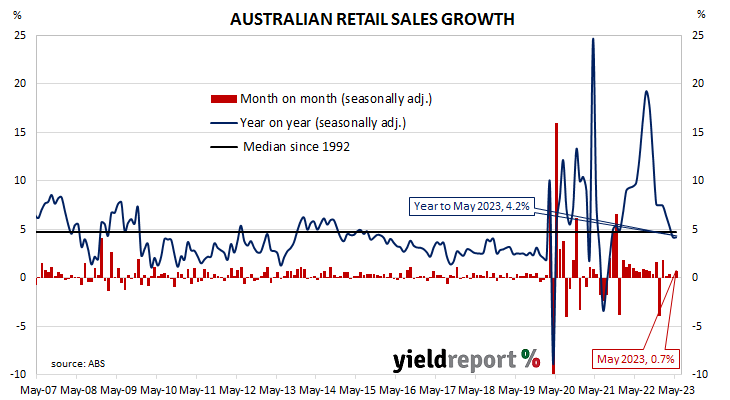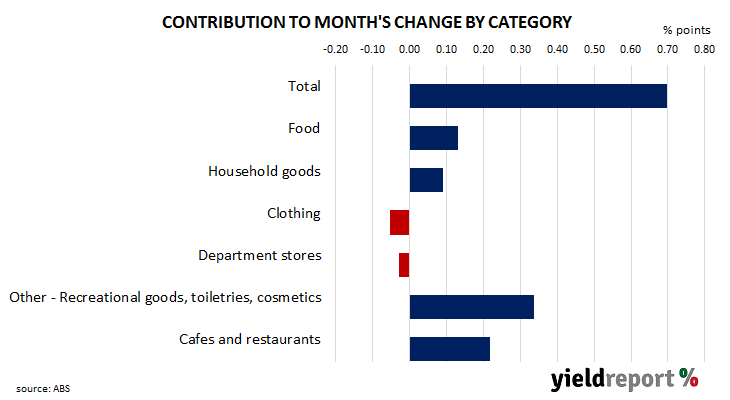Summary: Retail sales up 0.7% in May, more than expected; ANZ: does not mark start of rebound; Westpac: declining per capita volumes after inflation, population growth; largest influences on result from “other” (recreational goods, toiletries, cosmetics) sales.
Growth figures of domestic retail sales spent most of the 2010s at levels below the post-1992 average. While economic conditions had been generally favourable, wage growth and inflation rates were low. Expenditures on goods then jumped in the early stages of 2020 as government restrictions severely altered households’ spending habits. Households mostly reverted to their usual patterns as restrictions eased in the latter part of 2020 and throughout 2021.
According to the latest ABS figures, total retail sales increased by 0.7% on a seasonally adjusted basis. The result was above the generally-expected figure of 0.1% as well as April’s flat result. Sales increased by 4.2% on an annual basis, down slightly from April’s revised figure of 4.3%.
“Retail sales surprised to the upside, rising 0.7% in May, but we don’t think the strong May figure marks the start of a rebound in household spending,” said ANZ economist Madeline Dunk. “Households face a range of pressures on their balance sheets and, as such, may be thinking more about how and when to spend money.”
Commonwealth Government bond yields moved higher on the day, ignoring falls in US Treasury yields overnight. By the close of business, the 3-year ACGB yield had gained 6bps to 3.87%, the 10-year yield had added 3bps to 3.90% while the 20-year yield finished 6bps higher at 4.19%.
In the cash futures market, expectations regarding further rate rises firmed. At the end of the day, contracts implied the cash rate would rise from the current rate of 4.07% to average 4.16% in July and then to 4.31% in August. February 2024 contracts implied a 4.495% average cash rate while May 2024 contracts implied 4.47%, 40bps more than the current rate.
“While it goes some way towards easing fears of a contraction in spending in Q2, much of the retail gain still looks to be price-led with volumes tracking a flat quarterly result at best,” said Westpac senior economist Matthew Hassan. He noted “any monthly sales gain below 0.5% likely indicates declining per capita volumes” once inflation and population growth were taken into account.
Retail sales are typically segmented into six categories (see below), with the “Food” segment accounting for 40% of total sales. However, the largest influences on the month’s total came from the “Other” segment where sales increased by 2.2% on average over the month.



